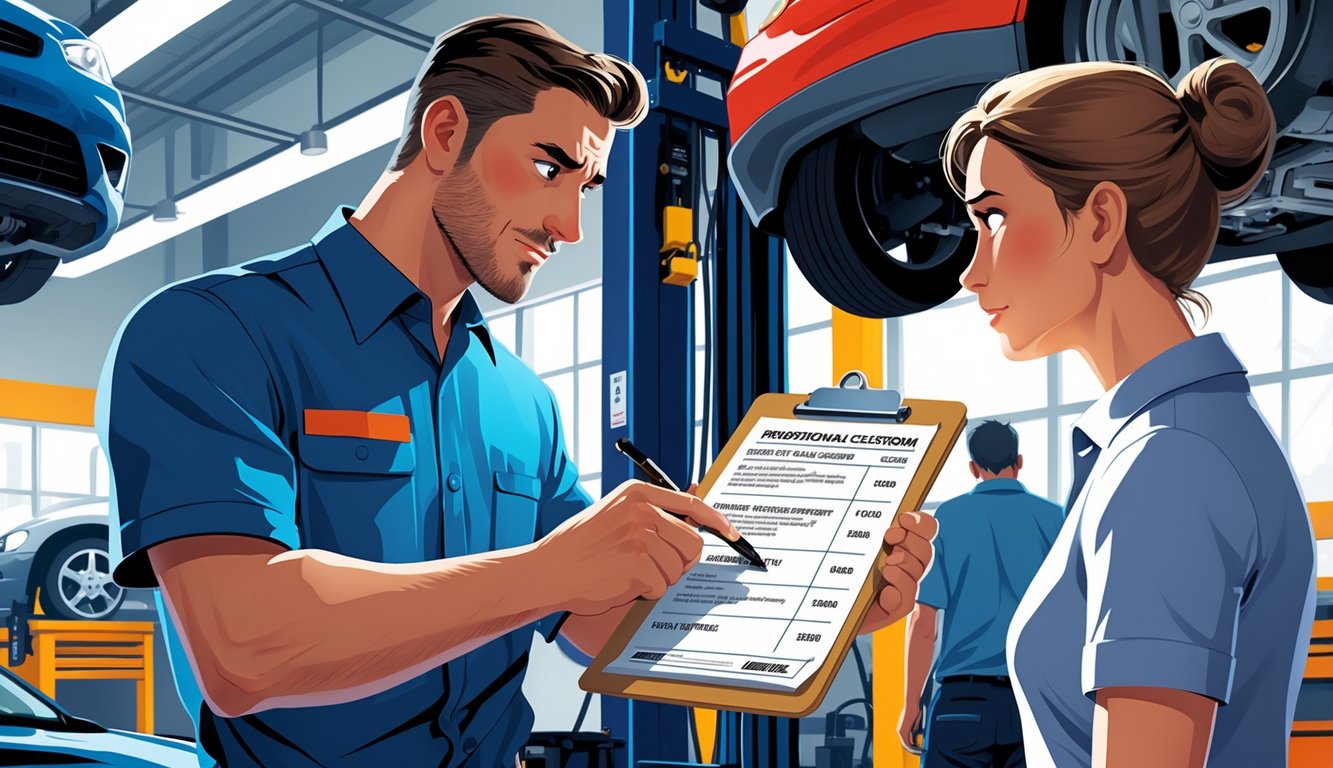
Leveraging Analytics for Better Decisions
There’s nothing worse than getting hit with a bill for some “flush” you never heard of. I’m staring at the tech, wondering if I missed a new flavor of ice cream while they typed in mystery codes. Analytics is just there, lurking in the background, churning out numbers, not holding a flashlight or anything—just doing its thing.
How Analytics Can Help Customers
Sometimes I dump all my invoices into a spreadsheet—doesn’t matter if it’s a mess, the spreadsheet doesn’t care. Analytics picks up patterns. Oil changes, “filter kits,” somehow always after long weekends? Why? My car gets “recommended bolt tightening” every March. Is that a thing?
Those graphs and dashboards repair chains email me (which I ignore half the time) can actually help spot weird price jumps or repeat upsells. Knowing what’s normal makes the offbeat stuff stand out—like a car wash billed as “vehicle performance enhancement.” If I felt like it, I’d check what my neighbor’s spending just to see if this “coolant flush” thing is just me.
I scribbled out a table once:
| Service | Average Cost ($) | Frequency | Upsell Pattern |
|---|---|---|---|
| Oil Change | 60 | 3x/year | Rare |
| Air Filter Kit | 35 | 1x/year | Always w/ AC |
| Coolant Flush | 120 | 2x/year | Every June |
| “Lube Package” | 40 | Random | After rain |
Tables don’t fix anything, but I showed it to the tech and he looked kind of freaked out.
Making Informed Service Choices
It’s not about perfect trust—just easier choices if I can see the numbers. That “Recommended repairs” sheet isn’t as terrifying when I know the codes, or see my cousin’s car got “fuel system clean” but mine says “injector magic.” Shops just make stuff up, don’t they?
I’ll pull up old receipts, text a friend—“Did you get tie rod lubrication, or is that just me?” Sometimes, services repeat like clockwork, always right after the warranty dies. I don’t check every line, but a chart or some color-coding makes it less stressful to say “nah, I’ll skip that.”
Once, I noticed all the “seasonal specials” lined up with calendar months. I joked about it at the counter while a fly buzzed around the coffee pot. Suddenly, the tech offered me 15% off the add-ons. Analytics never says that’ll happen, but it’s nice backup while I’m spilling coffee on their pamphlets.
Strategies for Repair Shops to Enhance Customer Experience
Nobody wants to get steamrolled into a pricier bill. I just want a new wiper blade, then suddenly we’re talking coolant flushes? Why. I want a shop that doesn’t feel like a negotiation every time. The little stuff—clear prices, not sitting by a bowl of stale candy—totally changes who I trust.
Prioritizing Customer Satisfaction
Communication, man. Not a big sign or a canned email, but someone actually looking up from a sticky keyboard and telling me, “Hey, your brakes are fine. You’re good.” Instead of leaving me to guess why my “discount” oil change costs double, maybe walk me through a checklist, show me the actual part. I saw a guy tape up price lists in the waiting room once—no fine print, just “oil change $40, tire rotation $20.” That’s it.
The small stuff matters. I lose loyalty punch cards instantly—do people save those?—but I appreciate a courtesy inspection that doesn’t invent new problems. When the front desk asks about my last visit, even if it’s obviously scripted, I let my guard down a little. I remember the tech who fixed my trunk latch for free, then told me I didn’t need a diagnostic. Still feels wild.
Implementing Tiered Pricing
Tiered pricing. Ugh, sounds like cable bundles, right? But, weirdly, if they’re up-front about it, I’m not mad. Suddenly you’re staring at three columns—sometimes on this laminated sheet that’s always got last week’s pen smears, whatever—and it’s all “basic,” “mid,” “full” service. Pick your poison or just the one that doesn’t make your wallet sweat. My friend, she always goes bottom tier—spark plugs, tire rotation, in and out. Nobody’s doing the upsell dance, nobody’s side-eyeing her hair (which, yeah, it’s a situation).
Somewhere I still have this napkin I scribbled on while waiting for an alignment. It looked like this, more or less:
| Service | Basic | Plus | Premium |
|---|---|---|---|
| Oil Change | Conventional | Synthetic | Synthetic + Flush |
| Tire Service | Visual Only | Rotation | Rotation + Balance |
| Brake Check | Pad Only | Full System | Inspection & Fluid |
I’m almost always picking “basic,” honestly. But if you’re commuting, like, two hours a day? Yeah, maybe “premium” makes sense. I just hate those surprise bills—one minute it’s $60, next it’s $180 and they’re muttering about “shop supplies” like it’s a secret club. Nobody wants to play detective at the register. Cats, maybe. Mine zones out on dust specks for hours.
I don’t really care if everyone goes premium or whatever. I just want to know what I’m signing up for, so I don’t get that sinking feeling when the estimate hits the counter. That’s all I’m after, honestly. Unless you’re the guy in the corner filming TikToks—no idea what he wants.
